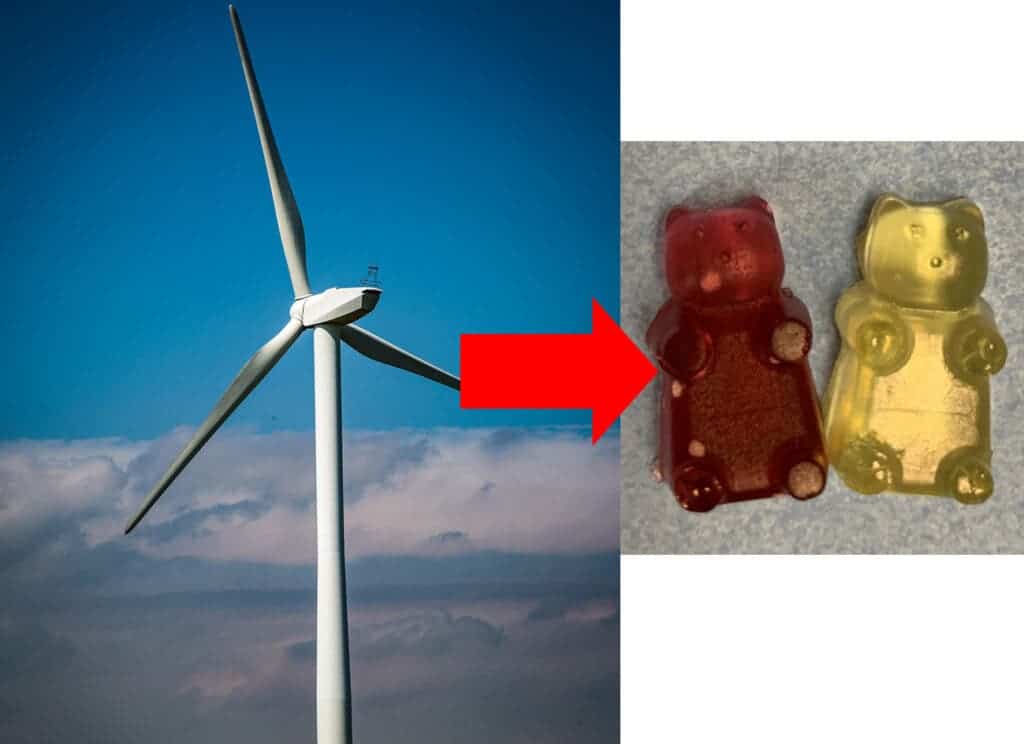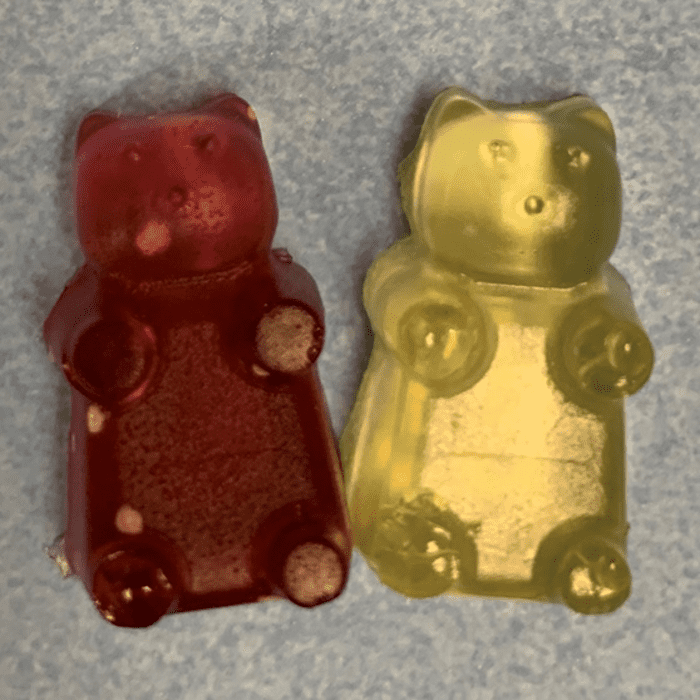
Wind turbines are a fantastic way for us to transition to a 100% renewable energy world. But that doesn’t mean the turbines themselves are completely sustainable. While up to 85% of a wind turbine’s parts can be recycled, its blades have remained a constant thorn in the industry’s side, most often ending up in landfills. Now, researchers have devised a new composite resin that is fit to be fashioned into turbine blades that can be recycled into a variety of products. The material can be used to make new turbine blades but also other completely different products ranging from countertops and car taillights to diapers and even gummy bears.
Clearing wind blade graveyards
Wind energy production has grown tremendously in the past couple of years, with demand still on an upward trend — and we couldn’t be happier. However, now that wind turbines have become ubiquitous, researchers and engineers are increasingly forced to face an unseen and often unspoken environmental problem caused by the wind industry.
About 15% of a wind turbine is non-recyclable. That might not seem like a big deal, but it’s worth remembering that wind turbines are behemoths, whose blades measure at least 40 meters nowadays and can weigh several tons.
Typically, these blades are dumped into landfills en masse, resulting in massive blade graveyards that look like ivory dumps from a bird’s eye view.
This practice is simply unsustainable given the projected growth of the wind energy industry and the number of turbines installed in the past that will soon have to be decommissioned.
Many wind turbines currently operating in Europe and the United States are part of the first generation that was installed in the 1990s, and are now nearing the end of their 20-year lifetime. By 2030, as many as 6,000 individual wind turbines per year could be decommissioned, resulting in massive blade graveyards. By 2050, we’ll dump over two million tons of wind turbine blades in U.S. landfills annually.
Conventional turbine blades are typically made of a combination of balsa wood, carbon fiber, and glass, bound together by stiff resin. However, this glue is too powerful for its own good, and separating the components is very costly — to the point that it isn’t economically feasible to do so.
“Larger wind turbine blades are more efficient, so companies keep making bigger and bigger ones,” John Dorgan, professor of chemical engineering at Michigan State University, said in a statement. “Often, wind farms will actually replace the turbine blades before the end of service life because the farms can generate more electricity with bigger blades.”
Researchers at Michigan State University have developed a new composite resin by combining glass fibers with both plant-derived and synthetic polymers that may finally make turbine blades truly recyclable.
In the lab, the researchers cast panels made of this resin, which proved strong and durable enough to be fit for use in turbines and automobiles. To demonstrate recyclability, the researchers dissolved the panels and then recast the material into entirely different products without causing alterations to the physical properties of the original material.
“The beauty of our resin system is that at the end of its use cycle, we can dissolve it, and that releases it from whatever matrix it’s in so that it can be used over and over again in an infinite loop,” Dorgan said. “That’s the goal of the circular economy.”
The dissolved resin was mixed with all sorts of materials to produce new composites suitable for common household items and consumer goods.
“We’ve recently made a bathroom sink with the cultured stone, so we know it works,” says Dorgan.

The researcher adds that the recovered resin could be used to make laptop covers, power tools, and a suite of other high-value upcycled products — and this even includes food. For instance, dissolving the thermoplastic resin in an alkaline solution releases potassium lactate as a byproduct, which can be purified and employed by the food industry to make candy.
“We recovered food-grade potassium lactate and used it to make gummy bear candies, which I ate,” Dorgan says.
“A carbon atom derived from a plant, like corn or grass, is no different from a carbon atom that came from a fossil fuel,” he says. “It’s all part of the global carbon cycle, and we’ve shown that we can go from biomass in the field to durable plastic materials and back to foodstuffs.”
The findings were presented this week at the fall meeting of the American Chemical Society (ACS).









